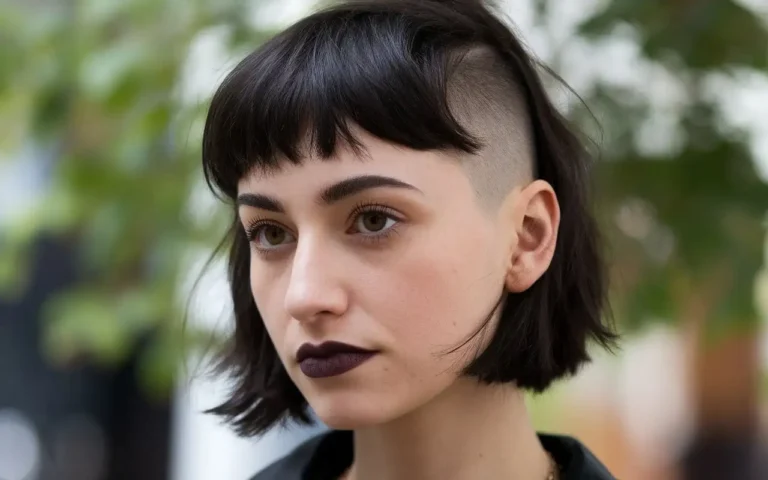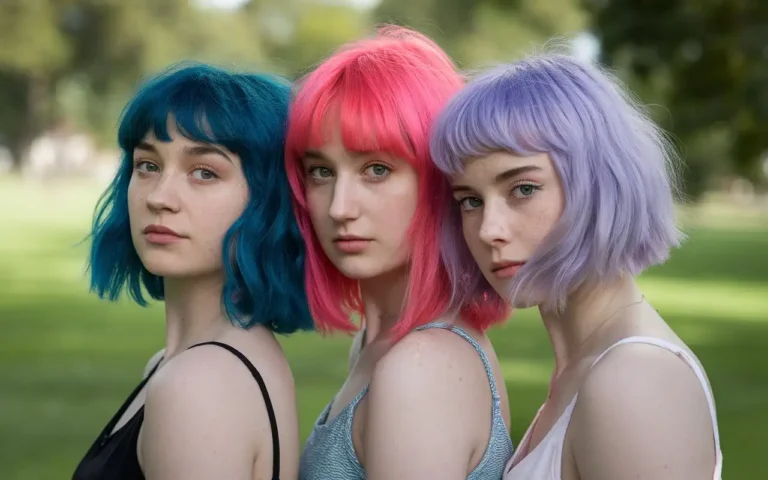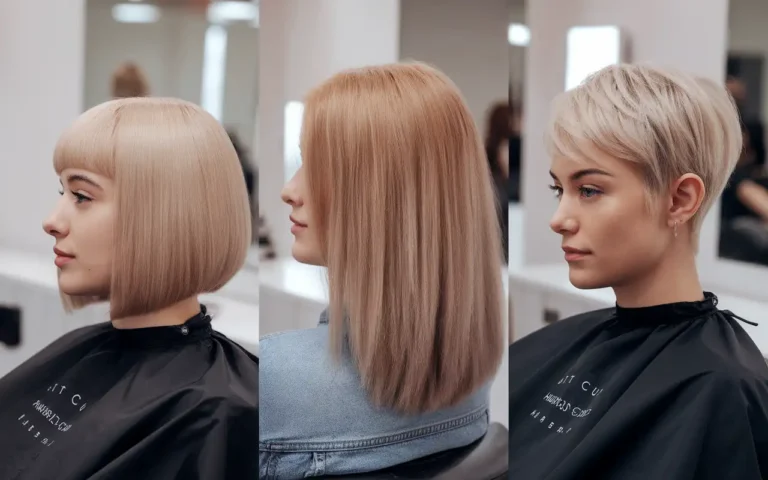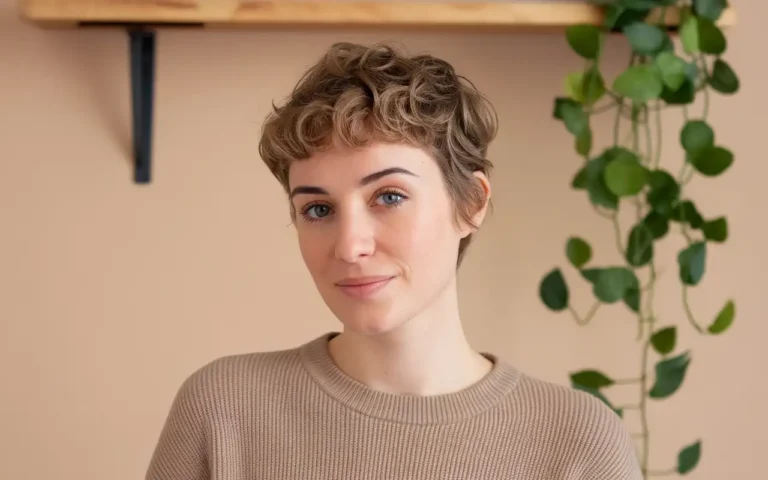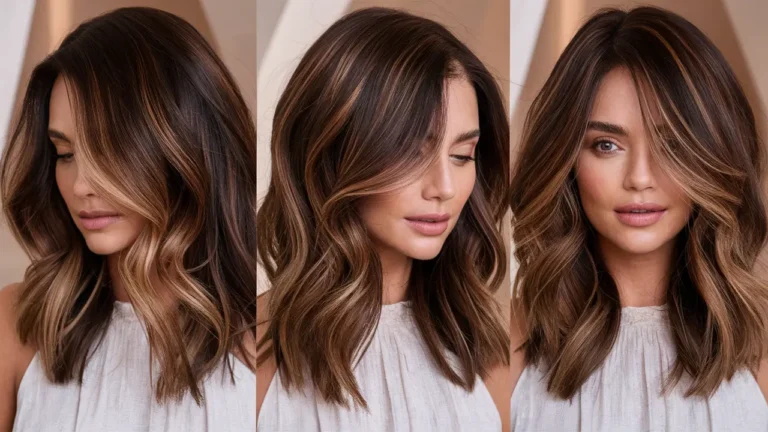Best Hairstyles to Protect Your Hair While Sleeping
You toss and turn all night, but your hair doesn’t have to suffer for it.
Friction against your pillowcase causes breakage, tangles, and frizz while you sleep. The wrong sleeping position can undo hours of styling work.
Protective hairstyles shield your strands from damage during those crucial eight hours. Let’s explore the best nighttime styles that keep your hair healthy and beautiful.
The Loose Top Knot: Your Go-To Gentle Style
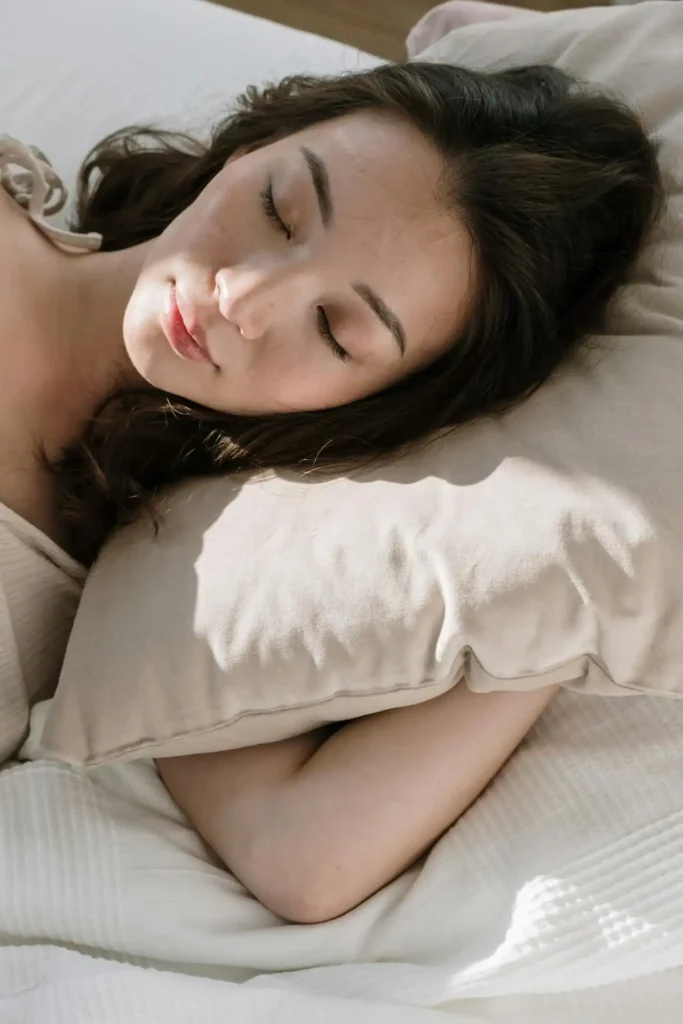
The loose top knot ranks as one of the most versatile protective styles for sleeping.
You can create this style in under a minute, making it perfect for busy nights when you’re ready to collapse into bed.
Start by gathering your hair loosely at the very top of your head. Avoid pulling too tightly, as tension can cause breakage at your hairline.
Twist your hair gently and wrap it around the base to form a bun. Secure the knot with a silk or satin scrunchie rather than a regular elastic band.
These smooth fabrics reduce friction and prevent the hair breakage that traditional elastics cause. The scrunchie should hold your hair in place without creating painful tension.
Position the knot high enough that you won’t sleep directly on it. The loose top knot works especially well for medium to long hair lengths.
This placement prevents the bun from coming undone and keeps pressure off your scalp. You’ll wake up with your hair still neatly contained and ready for easy styling.
Short hair may not have enough length to stay secure in this style, while very thick hair might need additional securing methods.
Silk Scrunchie Ponytail: Simple Protection That Works
A low ponytail secured with a silk scrunchie offers excellent protection with minimal effort. This style keeps your hair contained while allowing for natural movement during sleep.
Place the ponytail at the nape of your neck rather than high on your head. Choose scrunchies made from 100% silk or high-quality satin materials.
Low placement prevents you from sleeping on the elastic and reduces tension on your hair follicles. Your hair will thank you for avoiding the tight pulling that high ponytails create.
These fabrics glide smoothly against your hair strands, preventing the snags and breaks that cotton or synthetic materials cause. Keep several silk scrunchies specifically for nighttime use.
Wrap the scrunchie around your ponytail just once or twice. Over-wrapping creates unnecessary tension and can leave dents in your hair.
The goal is gentle containment, not a tight grip that restricts blood flow to your scalp. This method works particularly well if you plan to wear your hair down the next day.
The loose ponytail won’t create noticeable creases or waves, allowing you to simply remove the scrunchie and go.
Loose Braids: Classic Protection for All Hair Types
Braiding your hair before bed provides excellent protection while maintaining your hair’s natural texture.
Loose braids prevent tangling without creating tight waves or crimps that interfere with your styling plans.
Start with slightly damp hair for the best results. Moisture helps set the braid’s shape while providing extra protection against friction.
Apply a small amount of leave-in conditioner to add moisture and reduce static. The securing method should be as gentle as the braiding process itself.
Create one loose braid down your back, or divide your hair into two braids for extra security.
Keep the braiding tension gentle – you should be able to slide your finger easily along the braid. Tight braiding causes unnecessary stress on your hair follicles.
Secure the end of each braid with a silk scrunchie or snag-free elastic. Avoid rubber bands or tight elastics that can cause breakage when you remove them in the morning.
French braids and Dutch braids offer additional protection for those with longer hair.
These styles keep more of your hair length contained and protected from pillow friction. However, ensure these braids remain loose to prevent scalp tension.
The Medusa Clipping Method: Section and Protect
The Medusa clipping method involves sectioning your hair into multiple small sections and clipping each one loosely on top of your head.
This technique works exceptionally well for thick, long hair that’s difficult to contain in a single style.
Divide your hair into four to six sections, depending on your hair’s thickness and length. Each section should be manageable and not too heavy.
Start by parting your hair horizontally from ear to ear, then divide the top and bottom sections vertically.
Twist each section loosely and clip it to the top of your head using small claw clips or bobby pins.
Position the clips so they won’t dig into your scalp when you lie down. The twisted sections should feel secure but not tight.
Choose clips with smooth edges that won’t snag your hair. Avoid clips with sharp teeth or rough surfaces that can cause breakage.
Small claw clips work particularly well because they distribute pressure evenly across the hair section.
This method keeps your entire hair length off your neck and shoulders, preventing friction against your pajamas and bedding.
You’ll wake up with minimal tangles and your hair’s natural texture preserved.
Silk Scarves and Wraps: Luxurious All-Night Protection
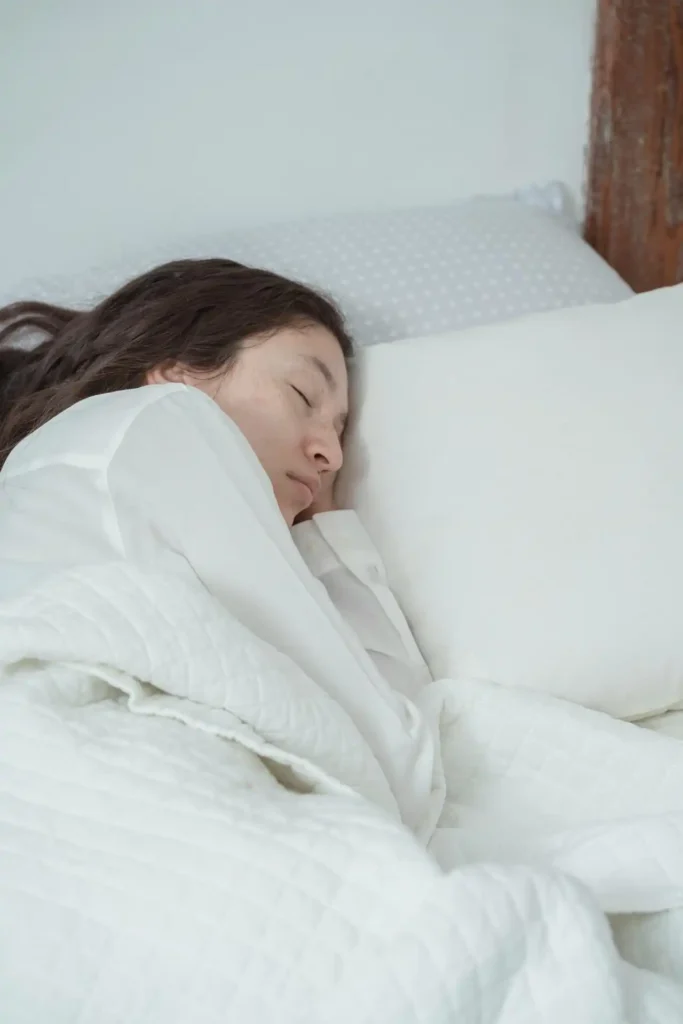
Wrapping your hair in a silk scarf provides comprehensive protection that goes beyond what simple styling can achieve.
The smooth silk surface eliminates friction entirely while helping your hair retain moisture throughout the night.
Choose a large square silk scarf, approximately 36 inches by 36 inches. This size provides enough fabric to wrap around most hair lengths and thicknesses.
Pure silk offers the best protection, but high-quality satin provides an affordable alternative. This method works for all hair types and lengths.
Fold the scarf into a triangle and place the long edge along your hairline. Tuck any loose hair ends under the scarf to ensure complete protection.
Bring the two pointed ends to the back of your head and tie them securely but not tightly. Pull the remaining point over the knot to cover all your hair.
The wrapped hair should feel secure but comfortable. You shouldn’t experience any pulling or tension on your scalp or hairline.
Curly and textured hair particularly benefits from silk wrapping because it maintains curl patterns and prevents frizz. Straight hair stays smooth and tangle-free.
The Pineapple Method: Curly Hair’s Best Friend
The pineapple method specifically protects curly and wavy hair by keeping curls off your pillow while maintaining their shape.
This technique earned its name because the resulting style resembles a pineapple’s leafy top.
Gather all your hair very loosely at the very top of your head, as high as possible. Use only your fingers to gather the hair – avoid brushes or combs that can disrupt curl patterns.
The gathering should be gentle and loose. Secure the gathered hair with a silk scrunchie, but don’t wrap the scrunchie tightly.
The goal is to create a fountain of curls that cascade from the top of your head. Your curls should feel free to move naturally.
Position the ponytail so high that your head won’t rest on it during sleep. In the morning, simply remove the scrunchie and gently shake out your curls.
This placement keeps your curls elevated and protected from crushing. You’ll maintain your curl volume and definition overnight.
Most people find their curls look refreshed and voluminous after using this method. You may need only minimal styling to achieve your desired look.
Low Buns and Chignons: Elegant Protection
Low buns and chignons offer sophisticated protection that works well for professional environments where you need polished hair the next day.
These styles keep your hair contained while creating attractive texture. The wrapping should be loose enough to prevent tension headaches.
Create a low ponytail at the base of your neck, then twist the length gently. Wrap the twisted hair around the ponytail base to form a bun.
Secure the bun with bobby pins that match your hair color. Insert the pins at angles to create a secure hold without pulling too tightly.
You should use enough pins to keep the style intact but not so many that removal becomes difficult.
For a chignon variation, braid your ponytail loosely before wrapping it around the base.
This creates additional texture and helps the style hold better for those with slippery or fine hair. The braid adds visual interest while maintaining protection.
Both styles work well with slightly damp hair, which helps set the shape for morning styling.
Apply a small amount of styling cream before creating the bun to add hold and moisture protection.
Protective Hair Accessories: Your Nighttime Arsenal
The right accessories make the difference between damaging and protective sleep styles. Investing in quality nighttime hair accessories pays dividends in hair health and morning styling ease.
Silk or satin scrunchies should form the foundation of your protective accessory collection.
Purchase several in neutral colors that won’t stain your pillowcases. Replace them regularly as the elastic stretches out or the fabric shows wear.
Silk or satin pillowcases provide additional protection beyond hairstyling. These smooth surfaces reduce friction even further and help prevent bedhead.
They also benefit your skin by reducing friction that can cause wrinkles. Store them properly to prevent them from collecting dust or losing their grip.
Small claw clips with smooth edges work well for sectioning methods like the Medusa technique.
Choose clips that open and close easily without snagging hair. Avoid clips with sharp teeth or rough surfaces.
Bobby pins should be snag-free and appropriately sized for your hair thickness. Invest in high-quality pins that won’t break or lose their shape.
Hair Length Considerations: Tailoring Protection to Your Style
Your hair length determines which protective styles work best and which accessories you’ll need.
Understanding these relationships helps you choose the most effective nighttime routine.
Short hair requires different protection strategies than longer lengths. Very short styles don’t have enough length for traditional protective styling.
Pixie cuts and bobs may need only a silk pillowcase and perhaps a small amount of leave-in conditioner to prevent frizz.
Medium-length hair offers the most styling flexibility for nighttime protection. You can use most protective techniques, from loose braids to top knots.
This length benefits greatly from silk scarves and protective accessories. Long hair requires the most comprehensive protection strategies.
The greater length means more surface area exposed to friction and tangling. Combination methods, like braiding hair before wrapping it in silk, often work best.
Very thick hair may need sectioning methods regardless of length.
The Medusa clipping technique or multiple loose braids help manage volume while providing protection. Single-style methods may not contain all your hair effectively.
Fabric Choices That Make a Difference
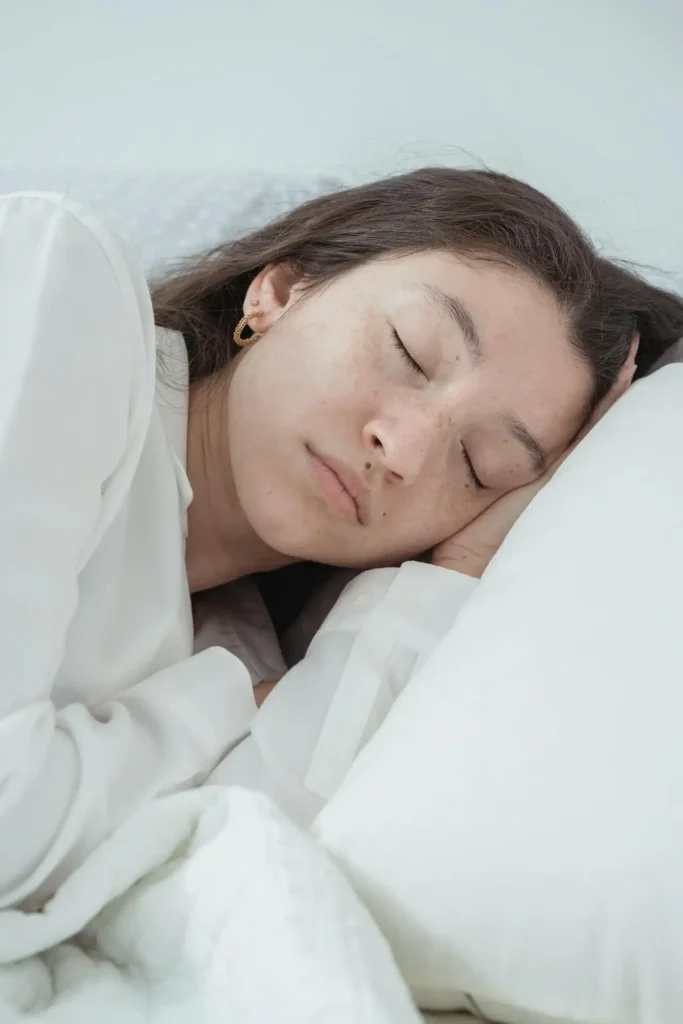
The fabrics that touch your hair during sleep significantly impact its health and appearance.
Understanding which materials help and which harm guides your accessory choices and bedding decisions.
Cotton pillowcases and hair accessories create friction that damages hair cuticles. Mulberry silk, specifically, offers the highest quality and durability.
This rougher surface catches and pulls at individual hair strands, causing breakage and frizz. Cotton also absorbs moisture from your hair, leaving it dry and brittle.
Silk provides the ultimate smooth surface for hair protection. Real silk contains natural proteins that benefit hair health while creating virtually no friction.
Satin offers similar benefits to silk at a more affordable price point. High-quality satin mimics silk’s smooth surface and friction-reducing properties.
However, synthetic satin may not breathe as well as natural silk. Bamboo fabrics provide another natural alternative with moisture-wicking properties.
Bamboo accessories and pillowcases feel smooth against hair while helping regulate temperature during sleep. This fabric works particularly well for those who sleep hot.
Temperature and Environment Factors
Your sleeping environment affects which protective styles work best and how your hair responds to nighttime protection. Consider these factors when developing your routine.
Hot sleepers may find that extensive hair wrapping creates too much heat around the head and neck.
Lighter protection methods like loose top knots or the pineapple technique may work better. Silk accessories help regulate temperature better than synthetic materials.
Cold environments may require more coverage to prevent hair from becoming brittle. Dry climates require extra moisture protection during sleep.
Silk scarves provide warmth while protecting, making them ideal for cold bedrooms or winter months. The additional coverage helps maintain hair moisture.
Humid environments can cause frizz even with protective styling. Focus on moisture-sealing techniques like silk wrapping combined with leave-in treatments.
The protection helps lock in beneficial moisture while keeping out excess humidity. Apply leave-in conditioners or hair oils before styling protectively.
The combination of moisture treatment and friction protection prevents excessive dryness and breakage.
Morning Routine Integration
Your protective nighttime style should complement your morning hair routine rather than complicate it.
Choose techniques that support your usual styling methods and time constraints.
If you typically wear your hair down and straight, loose braids or ponytails work well because they don’t create waves or crimps.
These methods provide protection without adding unwanted texture that requires additional styling time.
Those who prefer wavy or textured styles can use braiding methods that enhance their desired look.
Loose braids create gentle waves, while the scrunching technique enhances natural curl patterns. Your protective style becomes part of your styling process.
Time-conscious individuals should focus on quick-removal methods like the pineapple technique or loose top knots.
These styles come down easily and require minimal finger-combing to look polished. The simplicity supports busy morning schedules.
Professional environments may require more polished morning looks.
Low buns and chignons can transition directly into workday styles with minor adjustments. This continuity saves time and ensures appropriate appearance.
Special Considerations for Treated Hair
Chemically treated hair requires extra gentle handling during sleep protection.
Colored, permed, or chemically straightened hair has altered cuticle structures that make it more fragile and prone to damage.
Recently colored hair needs particularly gentle treatment for the first few weeks after treatment.
Use the loosest possible protective styles and prioritize silk accessories that won’t strip color or cause fading. Avoid tight elastics that can create pressure points.
Permed or chemically curled hair benefits from curl-preserving methods like the pineapple technique or silk scarf wrapping.
These methods maintain curl patterns while preventing the flattening that can occur with other protective styles.
Chemically straightened hair requires smooth, friction-free protection to maintain its treated texture.
Silk wrapping or loose braiding helps preserve the straightened structure while preventing reversion in humid conditions.
Bleached or highly processed hair needs the most comprehensive protection due to its compromised structure.
Combine multiple protection methods, such as silk accessories with moisture treatments, to provide maximum care during vulnerable sleep hours.
Troubleshooting Common Problems
Even with proper protective styling, you may encounter issues that require adjustment to your nighttime routine.
Understanding solutions helps you refine your approach for better results. Comfort should never be sacrificed for protection.
If you wake up with headaches, your protective style is too tight. Loosen all securing methods and ensure no pulling sensation on your scalp.
Styles that come undone during sleep need better securing methods or different techniques entirely. Try the sectioning approach or add additional bobby pins.
Very restless sleepers may benefit from silk scarf wrapping for comprehensive protection. The goal is containment, not compression.
Dents or creases in your hair indicate too-tight securing or inappropriate elastic placement. Switch to silk scrunchies and ensure all securing points remain loose.
Increased tangling despite protective styling suggests your current method isn’t working for your hair type or length.
Experiment with different techniques or consider cutting hair to a more manageable length for better protection.
Building Your Personal Routine
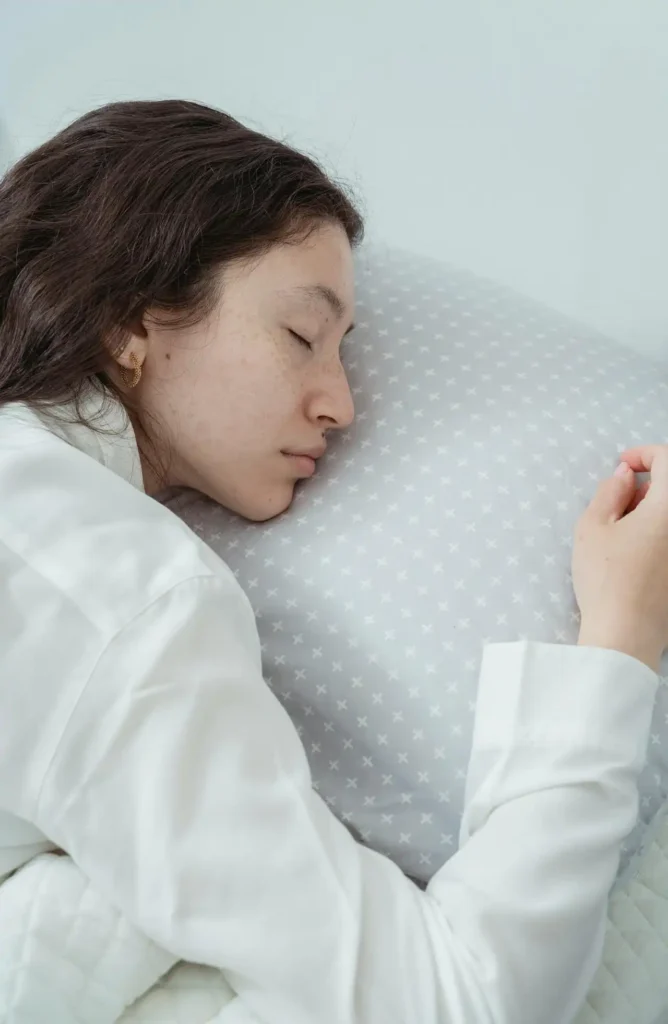
Developing an effective nighttime hair protection routine requires experimentation and consistency.
What works for others may need modification for your specific hair type, length, and lifestyle.
Start by trying one technique for a full week before evaluating its effectiveness. Keep notes about which methods work best for different hair conditions.
This timeframe allows you to see genuine results and adjust to any new sensations or routines. Single-night trials don’t provide enough data for proper assessment.
Your routine may need variation based on weather, styling products used, or hair washing schedules. Flexibility helps you maintain protection under various circumstances.
Invest gradually in quality accessories rather than purchasing everything at once. Consider your morning schedule when developing nighttime routines.
Start with one or two silk scrunchies and a silk pillowcase, then add items as you determine what works best for your routine.
Protection methods that require extensive morning styling may not suit busy lifestyles. Choose techniques that support rather than complicate your daily routine.
Conclusion
Protective sleep hairstyles preserve your hair’s health and beauty while you rest.
Choose gentle methods with quality accessories for the best results overnight.


